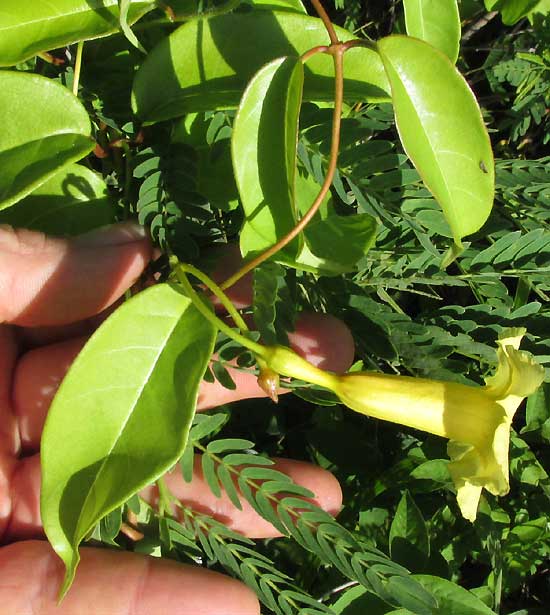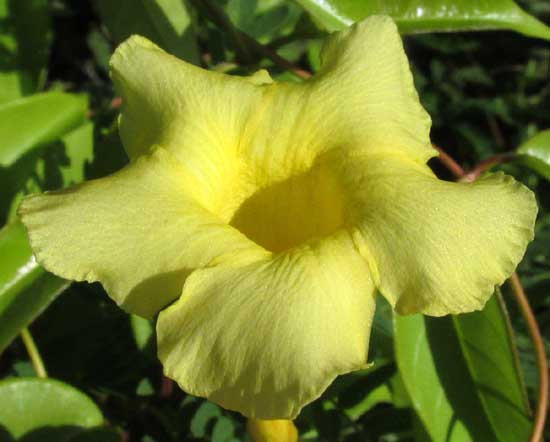Excerpts from Jim Conrad's
Naturalist Newsletter
from the July 23, 2017 Newsletter issued from Rancho Regensis north of Valladolid, Yucatán, MÉXICO
PENTALINON FLOWERING
Below you can see a fairly common vine here producing attractive, yellow flowers nowadays:

Anytime you see a plant with fair-sized flowers shaped like that, and thick, glossy leaves arising opposite one another on the stem, you need to make a little tear in a leaf to see if a milky-white latex oozes out. If so, it's surely a member of the big Dogbane/ Oleander Family, the Apocynaceae. This vine's injured leaves do bleed white latex, and it's truly of that family. A close-up of the flower from the front doesn't reveal much, other than its radial symmetry, and that's also right for the Dogbane Family -- as you can see below:

Breaking the corolla apart lengthwise you see other field marks confirming the Dogbane Family, shown below:

There you see five stamens inserted on the corolla tubes, the stamens' pollen-filled anthers yellow and arrow-shaped, and bearing at their tips long, slender, string-like appendages.
We've seen a vine with leaves and flowers a lot like this, growing rampantly in a garden beside the Caribbean. You can see how similar our present vine is -- but our present one's leaves and flowers both are a little more slender -- on the page for the Caribbean garden one's at www.backyardnature.net/yucatan/yellvine.htm
The vine along the Caribbean was Pentalinon luteum, frequently planted in tropical gardens because they're so robust and pretty. Our present, more slender wild species belongs to the same genus. It's PENTALINON ANDRIEUXII, found in southern Mexico, Central America and the Caribbean. It has no established English name, but in Spanish it's often called Contrayerba, which is a name applied to a number of plants believed to be of exceptional medicinal value.
In fact, if you do a Web search on the name Pentalinon andrieuxii, you'll find few pictures and very little general information about the plant, but numerous pages informing us that its root extract is effective in treating the disease known as leishmaniansis. Leishmaniansis manifests as localized skin lesions that can lead to significant tissue damage and disfigurement. Over 12 million people are said to suffer from the disease, with about two million new case turning up each year. The disease is considered "a major global health problem and a neglected disease." This information and much more on the research is available on the Web for free at https://www.ncbi.nlm.nih.gov/pmc/articles/PMC4136428/